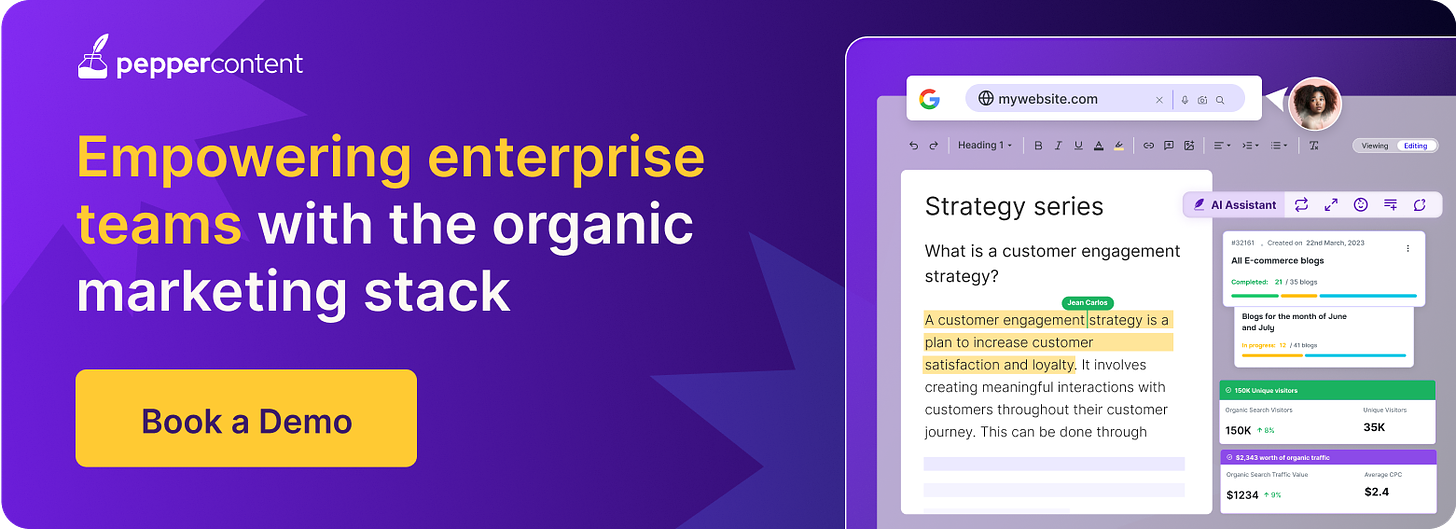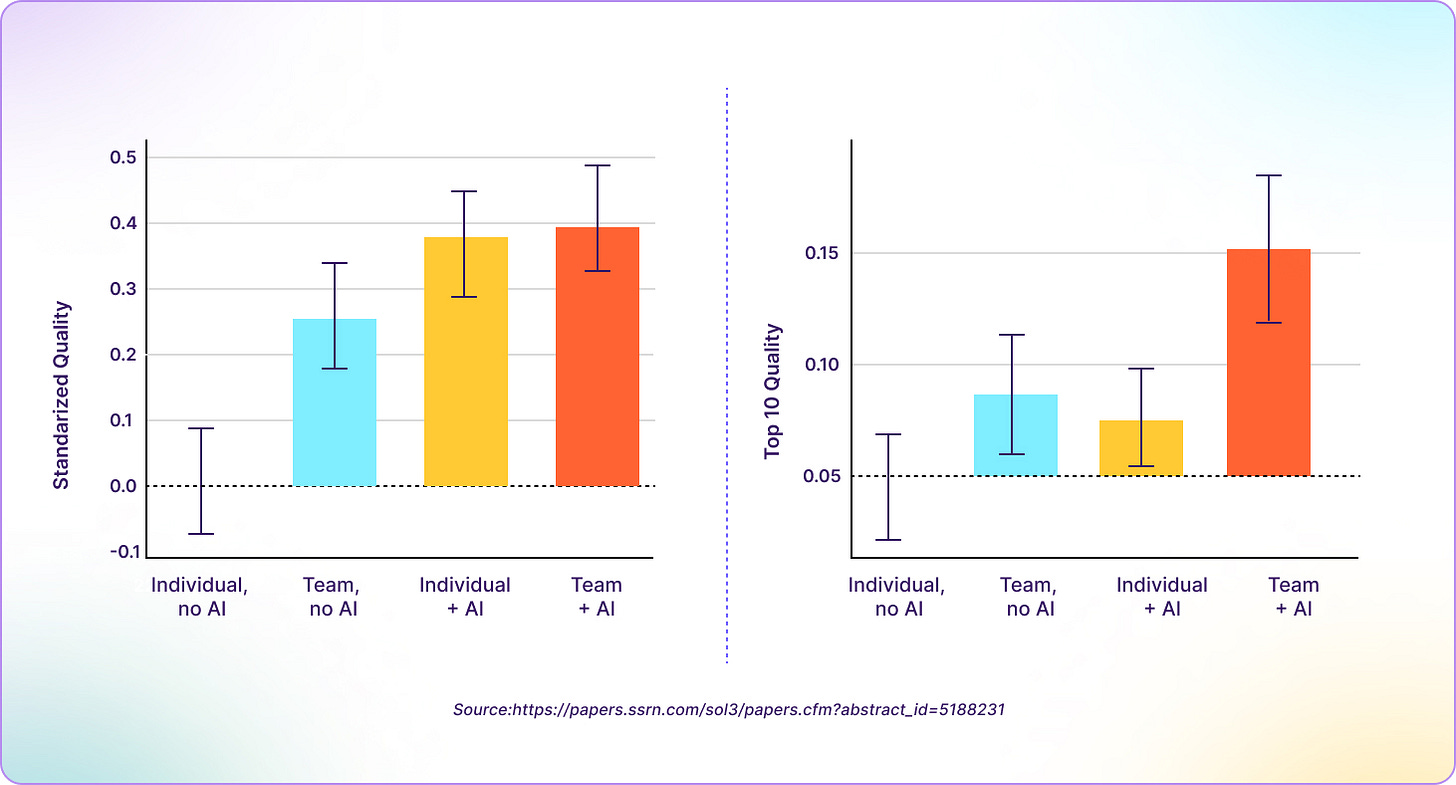Most marketers make the same mistake.
They separate SEO content from the rest of their content program — churning out mediocre slop in hopes of tricking the ranking gods.
Instead, you should be aiming to create the highest-quality, most engaging content possible — and every person touching content on your team should have SEO and large language model optimization (LLMO) in mind.
Don’t just take it from us. Listen to Emily Anne Epstein — a former editor-in-chief turned B2B content powerhouse. With a background at top-tier newsrooms like The Atlantic and experience scaling content programs at Asana and Sigma Computing, Emily knows how to tell stories that appeal to humans and algorithms alike.
In our latest episode of Global Marketing Leaders, Emily reveals:
Why calling something “SEO content” misses the point.
How to tap subject matter experts and turn dense insights into high-impact narratives.
Why content repurposing isn’t the magic bullet everyone wants it to be — and what’s worth your team’s time instead.
Where AI fits into the workflow (hint: think augmentation, not generation).
If you’re still siloing SEO from the rest of your content strategy, you won’t want to miss this conversation.
The AI Hype Matrix maps the latest AI news stories across an unimpeachable scale of Hype (everyone is talking about this!) and Fear (will this kill my career? Will this kill EVERYONE?). Here’s a rundown of the latest big news in AI.
Like most of us, the AI industry is bracing for impact in the wake of President Trump’s proposed new trade policies. Analysts project that tariffs could dramatically hike the price of GPUs — a major bummer for a sector that runs on computational horsepower and dreams of infinite scaling.
But while the rest of us are panic-buying cars and weighing the implications of a new world order, tech titans are charging ahead with business as usual — which, in 2025, means new product and AI model releases. In just the past couple of weeks, OpenAI announced GPT-4.1 and new long-term memory capabilities alongside a record-breaking $40 billion funding round, Anthropic rolled out a $200/month version of Claude and unveiled a new research feature, and even unexpected players like Canva are releasing impressive new AI tools. Meanwhile, Meta is developing AI ads that can analyze users' moods, habits, and locations — as if those Insta ads that correctly guessed your affinity for artisanal cold brew and astrology-themed jewelry weren’t stalkerish enough.
Speaking of creepy: San Francisco pedestrians this past week were surprised to hear an all-too-familiar South African accent blaring out from crosswalk audio after hackers tampered with the systems, using AI to clone the voices of tech figures like Elon Musk. Just another day of reality keeping the Black Mirror writers on their toes.
AI works best as a team sport
Here's some statistical vindication for that whole “humans+AI” hullabaloo we’ve been going on about: New data shows that teams working with AI absolutely crush it. In fact, human+AI teams produce significantly more top-tier outcomes than solo workers operating with AI or AI on its own. Consider this your permission slip to expense that Claude Pro subscription the next time your boss lobs a daunting task on your team’s desk at 3 p.m. on a Friday.
Make interactive content in minutes with Gamma
Gamma is kind of like a lovechild between Figma and ChatGPT. Start with a simple prompt or outline, and watch the tool generate entire presentations — complete with AI-crafted visuals, charts, and layouts that actually look good.
We've been test-driving Gamma at Pepper for some interactive content, and the ability to seamlessly integrate AI-generated elements while maintaining creative control hits that sweet spot between efficiency and not looking like everyone else's generic AI output. Plus, the platform's collaboration features mean your team can collectively argue about font choices in real-time rather than through 37 email attachments.
Decode customer feedback
Customer feedback ranges from Pulitzer-level prose to hieroglyphic text-speak. But buried in that avalanche of comments, reviews, and support tickets is marketing gold — if only you could extract it without losing your sanity. This week's prompt helps you transform that feedback soup into actionable insights.
Suggested prompt text:
I'll share a collection of unstructured customer feedback from various sources (reviews, social comments, support tickets). Please analyze this input to:
1. Extract the top 3-5 emotional themes driving positive and negative sentiment
2. Identify specific language and phrases customers use to describe their problems and solutions
3. Pinpoint unexpected use cases or benefits customers mention but we don't actively promote
4. Suggest how to incorporate these authentic customer perspectives into our marketing copy, with specific examples for website, email, and social content











